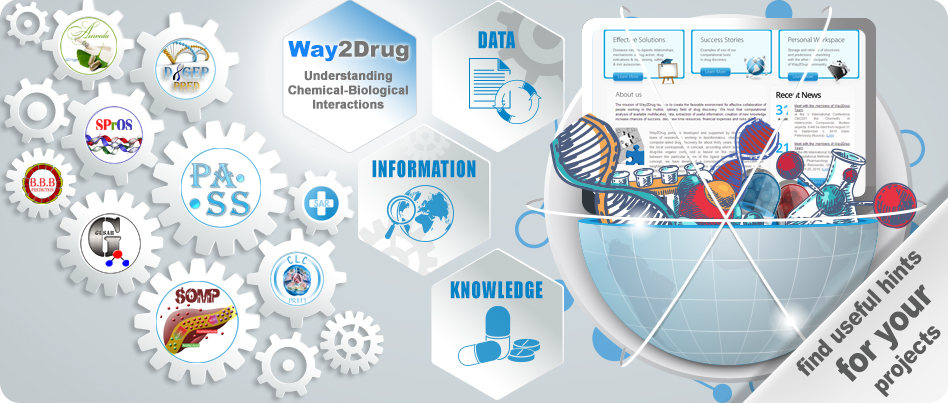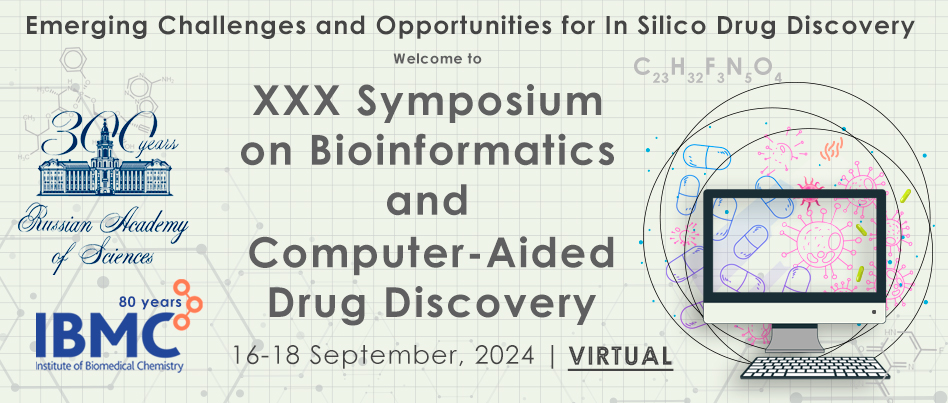
- Oct 29 Fri 2021 04:58
Solutions

Solutions

Understanding chemical-biological interactions is rather a complicated task because of the multifaceted structure-function relationships in biological systems. From the early beginning of our PASS project (Poroikov et al., 1990), the idea was to create the computational tool that must predict the complete biological activity profile of drug-like organic compound; PASS may be used for estimating general pharmacological potential of compounds under study. Since computing is carried out based on a structural formula, the prediction may be obtained for compounds that are just designed on the computer, neither synthesized nor tested yet. Based on prediction, one may select which of the proposed structures are the most promising for a particular purpose.
Sometimes, the predicted biological activity spectrum is rather wide that leads to the question, which biological activity should be tested first. The general recommendation is to test activities one-by-one starting from those with the highest probability.
In most cases, the researcher has very limited possibilities of experimental testing; thus, it is necessary to concentrate the attention on those activities that one could test. In the future, we are going to realize the option for selecting the set of activities that correspond to the particular interests of the researcher prior to the prediction.
It is necessary to keep in mind that PASS provides the qualitative estimates of the activities, calculating for a particular structural formula the probability of belonging to the classes of “actives” and “inactives”, respectively. Therefore, it is necessary not just to confirm that compound under study is active in the experimental assay but also to determine how potent is it.
If adverse or toxic effects are predicted for a particular compound, this is an indication that the compound under study has some structural similarity with the compounds from the training set with those effects. However, one should determine experimentally if adverse or toxic effects arise at the same dose/concentration as the desirable pharmacotherapeutic action or much higher doses. Also, it is necessary to keep in mind that for adverse & toxic effects prediction is based on clinical manifestations, which are sometimes observed in a few or even in a single patient.
If some known effect is not predicted for a particular compound, it means that this compound is rather novel comparing to the compounds with this activity from PASS training set. We are doing our best to provide better predictions for compounds belonging to new chemical classes. However, nobody can guarantee, that all possible cases are covered. Partially, the problem of the incompleteness of PASS training set is fixed due to the robustness of PASS algorithm (Poroikov et al., 2000). However, if one wants to improve the quality of PASS predictions for compounds from her/his chemical series and/or her/his biological activity, it is possible to add information about relevant biologically active compounds, which you know, into the PASS training set}. The next PASS version(s) will include knowledge about structure-activity relationships extracted from your information.
Web-services based on GUSAR (Filimonov D. et al., 1999) provide the quantitative estimates of some popular biological end-points, including acute rats toxicity, interaction with antitargets and some environmental toxicities. The superiority of GUSAR performance in creating quantitative structure-activity relationships models has been shown in comparative studies with some other popular computational methods (Filimonov D. et al., 1999; Zakharov A. et al., 2014). Of course, the local version of GUSAR may be used as an instrumental tool to create QSAR models using in-house training sets.
We do hope that our web-resources PASS Online, GUSAR Online, DIGEP-Pred, CLC-Pred, SOMP and others will help you to select the most promising compounds for synthesis and biological testing, filter out drug-candidates with potential adverse effects & toxicity, and finally, reduce the time & financial expenses needed for drug discovery.
If you are not completely satisfied with our web-services, you may try the local versions of our software, which provide the extended functionalities.
In case of any question/comment, please, do not hesitate to contact us.

 www.chelovekilekarstvo.ru
www.chelovekilekarstvo.ru